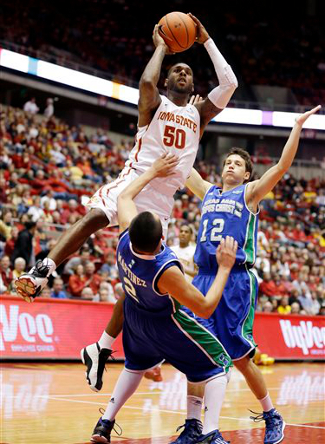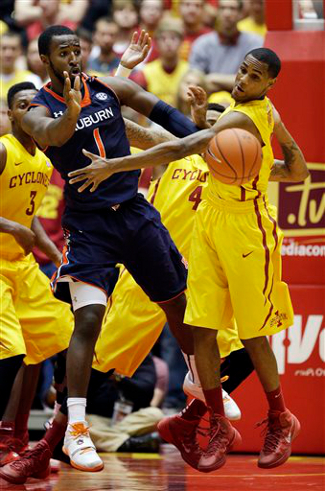#8/10 Iowa State Cyclones (14-2 overall, 2-2 Big 12) at Texas Longhorns (13-4, 2-2)
Erwin Center | Austin, TX | Tip: 3 P.M. CT | TV: Big 12 Network (Affiliate list)/ESPN3
Texas is back in action this afternoon, hosting a Top 10 opponent at the Drum. The Horns are coming off one of their most impressive performances of the season, a convincing road win in which they stifled the West Virginia offense and scored at will on the other end. UT’s defense held the Mountaineers to their lowest offensive efficiency mark of the season, allowing just 0.936 points per possession.
The Texas defense will need another strong performance this afternoon against an Iowa State squad that has the 26th-most efficient offense in the nation. The Cyclones get down the court in a hurry and find open shooters with just one or two passes, often scoring before their opponents even know what’s happened.
This game is an important opportunity for the Longhorns, who will likely be battling on the NCAA bubble all season long. In Joe Lunardi’s Thursday Bracketology update, UT was the last team left out of the field of 68. The bubble is just a bit smaller this season, as the formation of the American Athletic Conference means that there’s one less at-large bid available.

Fred Hoiberg is a little confused about today’s game
(Photo credit: Rick Bowmer/Associated Press) 
Defenses have a tough time slowing down DeAndre Kane
(Photo credit: Charlie Neibergall/Associated Press) 
Iowa State’s interior defense can frustrate opponents
(Photo credit: Charlie Neibergall/Associated Press) |











